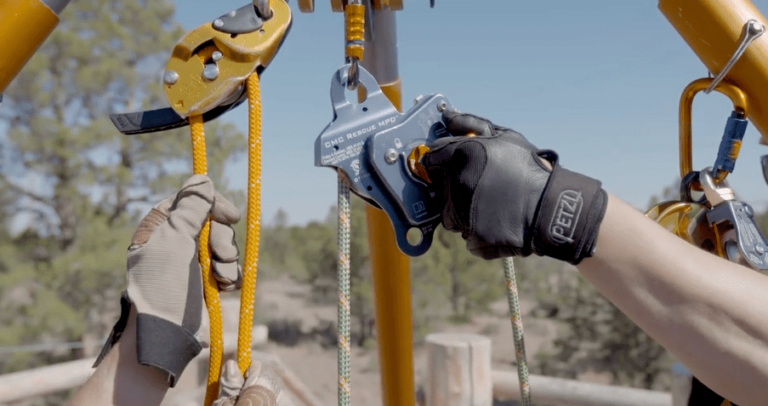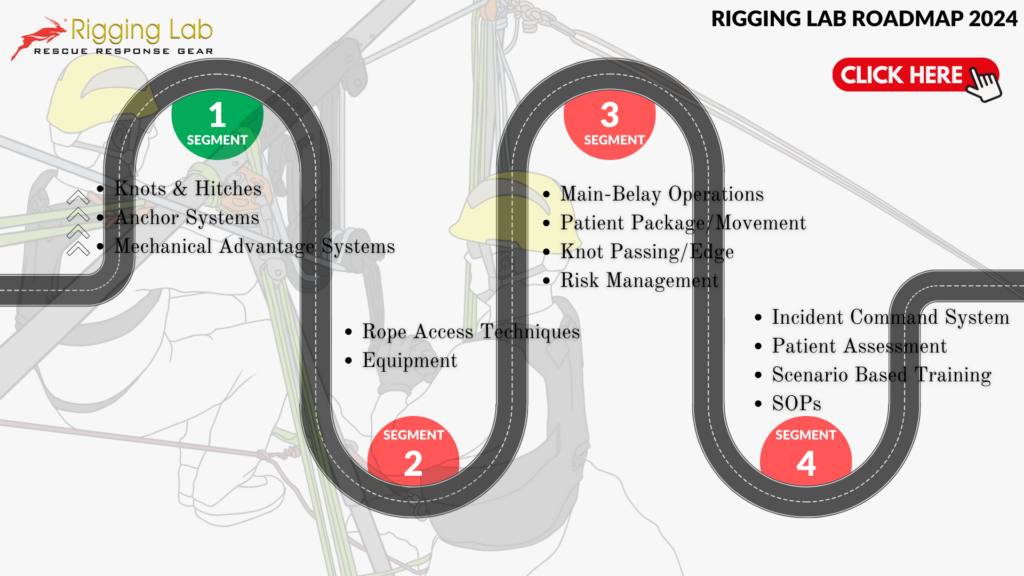Confined space rescue operations require a high level of skill, precise techniques, and comprehensive knowledge of safety protocols. This blog covers key components of confined space rescue operations, focusing on advanced strategies and critical equipment necessary to ensure successful rescues.
The Meaning and Importance of A.T.L.A.S.T.
The A.T.L.A.S.T. acronym stands for Atmosphere, Time, Locate, Access, Stabilize, and Transport. This framework is crucial in confined space rescue operations as it ensures rescuers address all critical aspects of the rescue process:
- Atmosphere: Monitoring and managing the air quality within the confined space is vital. Ensuring proper ventilation and detecting hazardous gases like carbon monoxide, hydrogen sulfide, and oxygen levels helps in preventing asphyxiation and poisoning (Rigging Lab Academy) (Rigging Lab Academy).
- Time: Time is of the essence in rescue operations. Working efficiently to minimize the time victims spend in hazardous conditions can significantly improve survival rates. Pre-planned and practiced procedures can save valuable minutes (Rigging Lab Academy).
- Locate: Quickly identifying the victim’s location within the confined space is crucial. Use of advanced tracking systems and constant communication can assist in rapid location (Rigging Lab Academy).
- Access: Safely reaching the victim involves navigating through potentially hazardous and narrow spaces. Proper training in using equipment like ropes, ladders, and other access tools is necessary (Rigging Lab Academy) (Rigging Lab Academy).
- Stabilize: Once the victim is located, providing immediate medical care to stabilize them is essential. This includes ensuring proper airflow, stopping any bleeding, and preparing the victim for safe extraction (Rigging Lab Academy).
- Transport: Safely extracting and transporting the victim to medical facilities is the final step. Using appropriate equipment like stretchers and ensuring the victim’s secure handling during transport are critical (Rigging Lab Academy).
Tactical Considerations Every Confined Space Rescuer Must Know
Effective rescue operations depend on several tactical considerations:
- Risk Assessment: Continuously evaluate potential hazards within the confined space. This includes monitoring atmospheric conditions and structural integrity to anticipate and mitigate risks (Rigging Lab Academy).
- Communication: Clear and constant communication among team members is paramount. Use reliable communication devices and establish protocols for regular check-ins to ensure everyone is aware of the ongoing situation and any changes (Rigging Lab Academy).
- Equipment Readiness: Regularly inspect and maintain all rescue equipment to ensure it is in optimal working condition. Equipment failure can lead to critical delays and endanger both the rescuer and the victim (Rigging Lab Academy).
- Team Roles: Clearly define and practice each team member’s role in the operation. This ensures that everyone knows their responsibilities and can perform their tasks efficiently under pressure (Rigging Lab Academy).
How to Rig Hauling and Lowering Systems
Proper rigging is fundamental in confined space rescues. Key techniques include:
- Mechanical Advantage Systems: Utilize systems like the 4:1 or 5:1 to reduce the effort needed to haul or lower loads. These systems increase efficiency and safety by allowing rescuers to move heavy loads with minimal effort (Rigging Lab Academy) (Rigging Lab Academy).
- Controlled Descent Devices: Implement devices that allow smooth and controlled descent, which is crucial for both rescuer and victim safety. Controlled descent devices provide precision and reduce the risk of falls or abrupt movements that could cause injury (Rigging Lab Academy).
Applying and Using Self-Contained Breathing Apparatus (SCBA)
SCBAs are essential for operations in environments with poor air quality:
- Training: Ensure all team members are proficient in donning, doffing, and operating SCBAs. Proper training includes understanding how to handle the equipment, recognizing signs of malfunction, and performing emergency procedures (Rigging Lab Academy) (Rigging Lab Academy).
- Regular Drills: Conduct frequent drills to keep skills sharp and ensure equipment is functioning properly. Drills help in familiarizing the team with the equipment and building muscle memory for emergency scenarios (Rigging Lab Academy).
Performing Spinal Packaging Inside of a Space
Effective spinal packaging is critical to prevent further injury:
- Sked Stretcher: Use devices like the Sked Stretcher for both vertical and horizontal extrications. This versatile device allows for secure and stable packaging of the victim, making it easier to maneuver them through tight spaces (Rigging Lab Academy) (Rigging Lab Academy).
- Training Videos: Utilize training videos to master the techniques of spinal packaging within confined spaces. Visual aids can significantly enhance understanding and retention of the correct procedures (Rigging Lab Academy) (Rigging Lab Academy).
Enter and Operate Rescue Systems for Vertical and Horizontal Confined Spaces
Navigating and operating within confined spaces requires specialized techniques:
- Horizontal Rigging: Master horizontal entry techniques, ensuring stability and safety during operations. Techniques include proper use of ladders, securing points, and ensuring consistent communication and monitoring (Rigging Lab Academy) (Rigging Lab Academy).
- Vertical Rigging: Use tripods and other high-directional systems to manage vertical rescues effectively. These systems provide the necessary support and stability to safely lower or lift rescuers and victims within vertical confined spaces (Rigging Lab Academy) (Rigging Lab Academy).
How to Assemble and Use Tripods and Portable Anchors
Tripods and portable anchors provide essential support during rescues:
- Set Up: Ensure tripods are correctly assembled and anchored. Follow manufacturer guidelines and best practices to ensure stability and reliability during the operation (Rigging Lab Academy) (Rigging Lab Academy).
- Stability: Regularly check the stability and integrity of the anchors during the rescue process. Any instability can compromise the safety of the operation and lead to accidents (Rigging Lab Academy) (Rigging Lab Academy).
Conduct Monitoring of the Environment and Confirm Bump/Calibration of Equipment
- Calibration: Regularly calibrate all gas monitoring and detection equipment to ensure accurate readings. Proper calibration helps in early detection of hazardous conditions, enabling prompt action (Rigging Lab Academy) (Rigging Lab Academy).
- Environment Monitoring: Continuously monitor the atmosphere within the confined space for hazardous gases and oxygen levels. This ongoing vigilance helps in maintaining a safe environment for both rescuers and victims (Rigging Lab Academy) (Rigging Lab Academy).
Conclusion
Mastering confined space rescue operations involves meticulous planning, continuous monitoring, and a thorough understanding of hazards and equipment. By following the A.T.L.A.S.T. framework, implementing effective tactical considerations, and mastering the use of essential equipment, rescue teams can enhance their readiness and effectiveness in handling emergency situations.
For detailed training and courses, visit Rigging Lab Academy.










